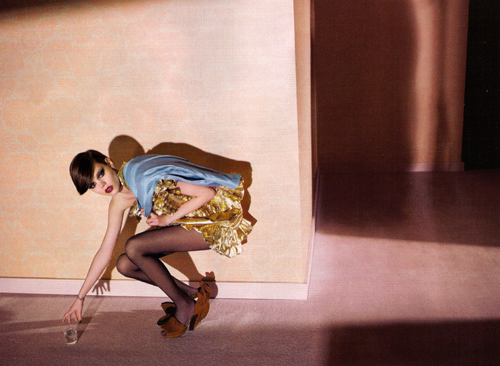As far as I know, very often overlooked in the canon of American photography is Ray Metzker, and I suggest seeing his work whenever you have a chance b/c he takes the formal conventions of photography to their maximum. In effect, through such things as double exposures, cropping, or something as simple as displaying in diptychs, he takes every day realities and creates new realities – and not in the simple Winogrand sense of photographing things to “see what they look like photographed,” but in a more deep, controlled, and impressionistic sense of transforming things in an act of creating truths.
Making work that is autotelic like this is something…well, let’s just say it’s not exactly the style of the moment; that is, creating with politics that refuse conventional politics/content – and it’ll have trouble ever becoming fashionable b/c in a way it is something that has to be done in silence, and silence, needless to say, doesn’t sell. To be clear, I don’t write here thinking in terms of the old Romantic vain of l’art pour l’art, but I mean something in the post-post-modernly sense of, say, the “inaesthetics” of Alain Badiou, were art can be “immenent” and not mimesis (see his text, The Handbook of Inaesthetics). Though, stubbornly, I’m still grappling with the mathematical and inhuman definitions of art in Badiou’s approach, but that is another discussion for another time.
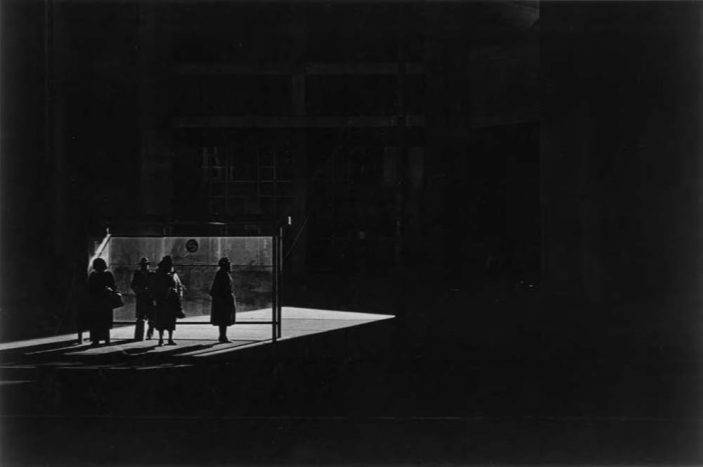
Philadelphia, 1963. © Ray Metzker.
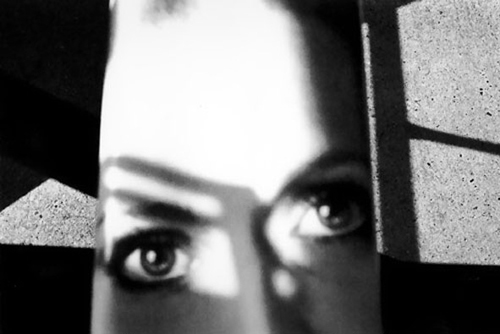
Pictus Interruptus, 1977. © Ray Metzker
“I work and photograph while hoping to stop everything. In that sense, my work may be some kind of revenge drama about living now.” -Fukase

photo: Kanazawa, 1977. © Masahisa Fukase.
You’d think I’d look more often to that old aesthete Klein as being a man after my own heart, having his hands heavy in shooting the streets and shooting fashion and shooting portraits. Insert heart-felt swoon for the days before the term personal work was ever imagined.
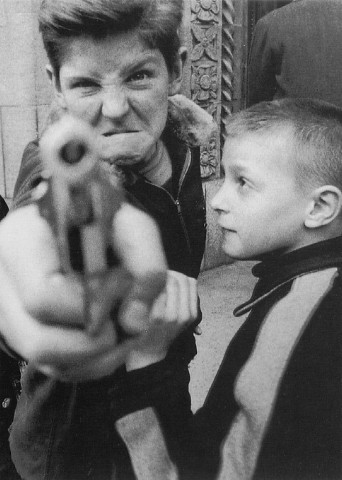
photo: Broadway and 103rd St. New York, 1954-55. © William Klein.
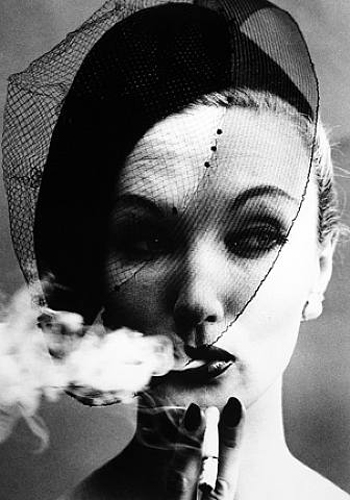
photo: Smoke and Veil, Paris (Vogue), 1958. © William Klein.
The point of this nearly loses its poignancy when I fess to not remembering where it was (not even in what country) that I saw a print of Andre Kertesz’s Chez Mondrian, but the point still feels very valid that it was one of those transformative photographs for me when I saw it, not in content in so much as the quality of the print itself. A photographer can have epiphanies regarding the possibility of expression through technique when they see for the first time the completed print of a master. Quality becomes, after all, a relative thing. Needless to say, these are not ink jets.
This is not meant to overlook the content of this photograph though, as it might as well be a example in perfect composition, rhythm and balance. I dare anyone to start, “well, if I had of shot it I would have…”

photo: Ches Mondrian, 1926, by Andre Kertesz.
(I know for sure I had the same sort of, jesus that’s good moment while seeing Sander‘s prints for the first time. I’d have to think for a bit to come up with others.)
I was talking with a friend at W+K, and she was genuinely proud of the new courage spot they’d put out recently for Nike. Click here to see it bigger.
Nike/W+K is one of the reigning kings of transcending product and making their product seem nearly intangible…or as tangible as being a hero in a Rocky Balboa manner of being, I guess.
This of course entails heaps of bathos, but so what.
video: Nike “Courage” tv spot, done by W+K Portland.
A revealing-on-numerous-levels interview with Tellar in NY Mag (here).
Teller’s work took a looong time to grow on me; even if it’s a mistake %97 percent of the time for an artist to talk about the why of their work, for reasons ranging from authorial trespassing to just sounding like an asshole, especially dangerous when it’s based largely on their sexuality, as is the case here…even if, I still like his pictures.
Okay, so here we go, part 2 to this post I did some time ago.
Open parenthesis.
There is more than some apprehension on my part in writing and posting this. Not b/c I’m harboring a secret, far from it, but b/c I feel like it is pedantic and pretentious to act in accordance as though some sort of secret exists to being with (it does not). That’s not my intention, and I hate to risk it seeming so. No doubt, I’m betraying something of myself here, but whatever. With that, these are pieces of advice that were given to me at one time or another, or they’re things that I feel took me hard time to figure out. Also, they’re things I will say light heartedly at one moment and then dead seriously at the next, b/c there really are no rules, so embrace them and mock them with propitiousness. As the intellectual Ivan Karamazov said, “everything is allowed.”
Though, some diffidence is maybe not a terrible idea, so it’s also good to keep in mind that, as a Lit. professor used to say when a student would make a eager, ill thought out, and soon regretted comment, “there are no right answers in this field, but there are certainly wrong ones.”
Finally, I implore others to offer their feedback here, agree and disagree, and most of all add your bits of advice too.
Close parenthesis.
-If you want to shoot fashion, forget the photo editors; rather, get to know the fashion editors. In my experience, photo editors have remarkably little to do with the fashion work in magazines (sweeping generalization). Now, if you’re looking for portrait work or feature work, then get to know the photo editors.
-Don’t set your heart on fashion b/c you think it’s going to make you cool. It’s not. In fact, it might be the least glamorous of the genres b/c it’s so saturated and near cliche and self-parody. Plus, I believe there are many other areas of photography ripe to be reinvented. I look at anything from portrait to landscape to still life and think they’re areas wide open for a new poster child from our generation. But if you love clothes and the aesthetic of clothes, then by all means, jump in! Be sure that jump’s with alacrity on your part though or I’ll suggest it’ll be wasted.
-Along those same lines: some of the happiest and most successful photographers I know work in B-markets and are names you’ve never heard of. They have big studios, work all the time, make lots of money, and have really nice lives. As you get older you learn that survival and maybe even quality of life might be better to come before those tunnel visioned dreams of posterity or fame. Not that I heed this at all, but still: try to keep an eye on the big picture and be realistic.
-Study! This forum is a testament to my love of learning from what others have done before us.
-This one is kind of personal, but adopt it to your liking: take walks w/o a camera and find pictures. Often I find it makes it more natural to learn to see when the act of taking pictures is not even present. This will inform your work when you do have a camera in hand. It’s not a practice in Zen; it is a practice in developing an intelligence of envisioning a photograph before you pick up the camera.
-(Advanced advice) D-76 leads with the shadows, Rodinal with the mid-tones, HC-110 with the highlights.
-Do not be afraid of mistakes. They’re often the best thing that will happen to your work. But oddly at the same time, your mistakes better be damn fine b/c you can’t afford to get it wrong.
-You can’t control anything past the tip of your nose.
-Regardless, as the photographer, you are responsible for everything in the photograph. As far as you’re concerned, the blame stops at you.
-I’m despondent to admit that it is probably true that if you make prints that are both big and with a substantial amount of red, you’ll probably get a show and sell it out. (There was a wonderful list full of humor and truth on Alec Soth’s Blog by a professor of photography that humorously went over “to dos” and “not to dos” to be a successful fine art photographer, but Soth’s blog archive is currently down so I can’t link it…)
-There’s no substitute for raw talent and inspiration, but at some point it comes down to putting in the time. As Gaddis wrote in one of his novels, and I paraphrase, a young artist can get by on honesty, but an old artist must rely on skill. Wait…or was it Vollman who wrote that?
-Be prepared to discover that much of the biz is politics and who you’re friends with, and that there’s lots of independently wealthy, good looking, connected people that seem to have a serious upper hand. No point bellyaching about it; it’s the invariable games we humans play. But, at least in rags to riches ethos of this country, it doesn’t matter who you are as long as you make yourself valuable to others.
-The petty and ubiquitous statement that the other guy could shoot it so well b/c he/she had lots of assistants and a grip truck and a budget is, to put it simply, bullshit. Even if it’s true, and it probably isn’t, nobody cares or wants to hear about it.
-Be patient. Like any business, and certainly like any competitive business, it takes a long time to get your footing. Don’t let the insta-rising-star stories of McGinley and etcetera confuse expectations. I know talented guys who have been sweating for a decade and are still just getting by.
-There is no secret club or secret world in NYC or London or ____.  Sure, there’s bars that most people can’t get into and that are good to be known at, but for the most part you can call art buyers at any major agency or photo editors at any major magazine and make an appointment and they’ll meet with you and see your work. If you’re not in NYC or London or _____, then spending money on a plane ticket and doing this twice a year is, imo, a way better investment than getting that new camera. Then again, Meatyard kind of proved years ago it doesn’t matter where you’re at, just what you do.
-Do not be afraid to begin something great.
The list, of course, goes on, ad infinitum. But at some point it becomes less about photography and more about the crags and gullies only your therapist is qualified to be digging around in.
So I’m ending here.
School’s out.
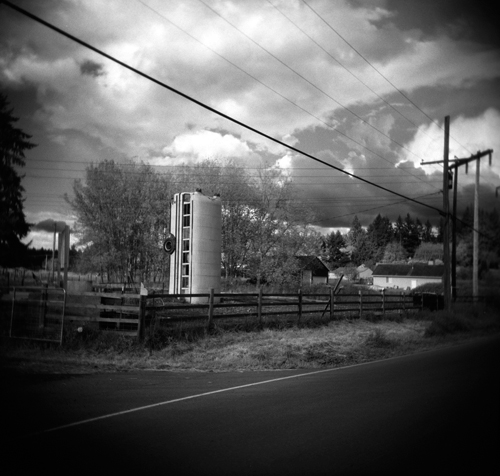
photo: ©Graeme Mitchell 2002.
Caught onto the Montcler Gamma Rouge line over at the trendphilia Sans Artiface blog. These are some hawt down jackets, and if they did mens, well, rowyco. Form and silhouette like this practically photographs itself.

photo: Montcler’s Au Chateau jacket, image from their website.
Kodak asked if I would let them use an image for their booth at the upcoming Photo Plus Expo. I did mull it over for a bit but in the end obliged with this shot. I wanted to give them something that I personally don’t think could have been done on anything other than black and white film.

photo: from Bolivia series. © Graeme Mitchell 2008.
And, yes, this was indeed shot on Kodak film, Tri-x. And for those photo dorks out there, notice the increased edge of density where the image meets the negative border (i.e. edge effects). Call it a fault, or call it an interesting byproduct of using a paraminophenol/non-solvent developer invented in, like, circa 1890.
A scan of an ad I did for Covet, found it towards the front of the Sept 08 issue of Zink:
Unfortunately, one of my favorite parts of this photo was a big-noir-Hitchcockian bird pasted ominously in the sky like an act of God collage, but, alas, it was cropped of the top to make page dimensions. Oh, the crop, how it can break my heart.
It surprises me I haven’t posted this before…

photo: Jean Shrimpton, evening dress by Cardin, Paris studio, January 1970. © Richard Avedon.
So I gawked over the new Interview, but most of the other big Sept issues have been leaving me tired. Then I ran into Harper’s Bazaar, which I only ever really pick up to see what Lindbergh is up to, and, woo-ee, great issue with editorials by: Akrans, Sundsbo, Burbridge, Kadel, Lagerfeld, Goldberg, Luchford, Lindbergh, Lubomirski. (Almost all on location too, which seems like the default this fall over the studio. Maybe everyone is worn out on the big Briese Focuses or disenchanted with the death of 8×10 polaroid.)
photo: model Freja in Harper’s Bazaar, Sept 08. ©Glen Luchford.
(Channeling a little Guy in that shot…love it.)
A certain favorite: Alfred Stieglitz‘s photo of Georgia O’Keeffe titled, aptly, “hands.”

photo: Hands, 1918. By Alfred Stieglitz.
In case you’re thinking you’re a fan too and would like to have it for the ol’collection, it went for nearly 1.5 million U.S. at a Sotheby’s auction two years ago… Worth every brass penny imo. Not to mention probably a brilliant investment as I would imagine it would fetch much much more today with the hungry Russian and Asian art markets.
And on the topic of Steiglitz: there’s an excellent PBS documentary in the America Masters series (here), which is worth picking up. It thoroughly explores his relationship with O’Keeffe, and shows how much he spearheaded photography and, more interestingly, modern painting. A tireless activast for the arts.

Antonioni‘s 1966 film Blow Up‘s influence on a generation of to-be photographers is probably old news to most of you, but to those youngsters who haven’t seen it or heard of it, it’s worth researching and seeing. Or at least ask any photographer in their 50s about it, b/c they’ll most likely get a big grin and tell you how this film was the reason they became a photographer. It’s an excellent portrayal of the mod-swinging-London heyday when photography was just taking off in advertising, and shooting was cool as hell, easy, and you made grips of money doing it (based directly on David Bailey‘s lifestyle). You can imagine when this hit the 1960’s countryside every twinkle-in-their-eye boy decided it was their calling.
On a not so simple level, despite the easy to the point of boring plot, it’s a difficult and irksome film that you’re probably most likely to catch in a film theory class in University. It took me two viewings to appreciate the not so noticeable levels of meaning weaved through the film. Or you can just watch it to sigh and smirk at the glory days gone in the fashion biz.
And if you’re a jazz fan, the soundtrack is by Herbie Hancock.
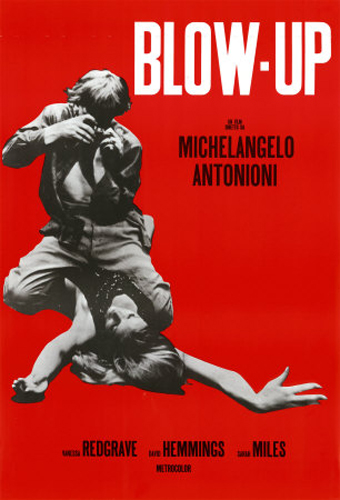
photo: movie poster for Blow Up
Well, got a good look today of Interview‘s Sept 08 issue and the crew there has in a single issue transformed the magazine from the gasping for it’s last breath’s celebrity rag that Warhol invented so long ago to a fashion force to be reckoned with. Fabien Baron and Karl Templar have gradually been upping the ante with shoots like Mikael Jensen’s Eve Mendez spread last month, but this issue is a big, ballsy, and, I think, excellent move deeper in that direction. To drop some names from it: McDean, Sims, Mert and Marcus, Jensen, Templer, Guido, Moss, oh, and an entire spread dedicated to Margiela! And as if that’s not enough, they added an inch to page size and went to perfect binding.
[Insert applause].
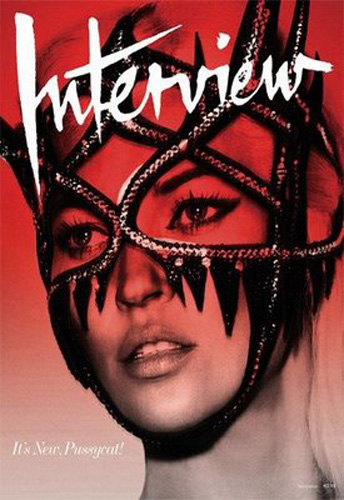
photo: Interview Magazine Sept 08 cover, Kate Moss shot my Mert and Marcus.


